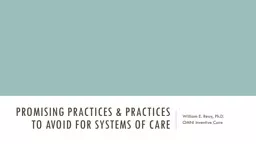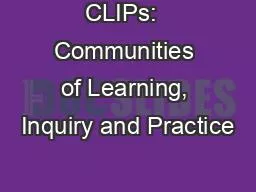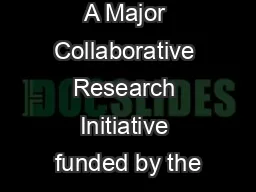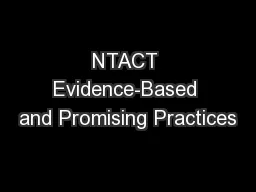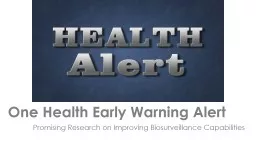PPT-Promising Practices & Practices to Avoid for Systems of Care
Author : briana-ranney | Published Date : 2018-10-13
William E Reay PhD OMNI Inventive Care Note to Webinar Participants This webinar is a primer The applied research on evidencebased care is massive Many of the EBP
Presentation Embed Code
Download Presentation
Download Presentation The PPT/PDF document "Promising Practices & Practices to A..." is the property of its rightful owner. Permission is granted to download and print the materials on this website for personal, non-commercial use only, and to display it on your personal computer provided you do not modify the materials and that you retain all copyright notices contained in the materials. By downloading content from our website, you accept the terms of this agreement.
Promising Practices & Practices to Avoid for Systems of Care: Transcript
Download Rules Of Document
"Promising Practices & Practices to Avoid for Systems of Care"The content belongs to its owner. You may download and print it for personal use, without modification, and keep all copyright notices. By downloading, you agree to these terms.
Related Documents

